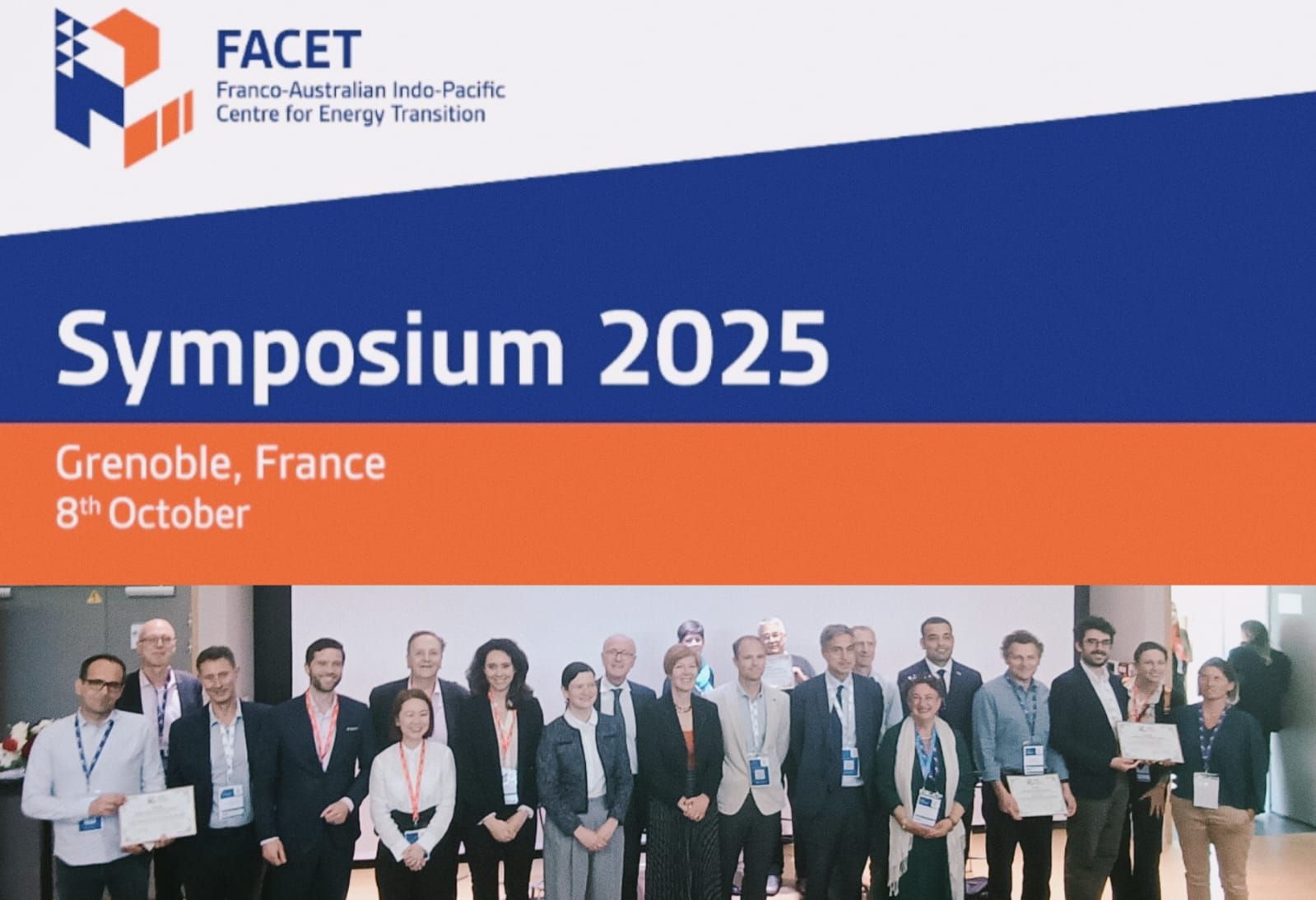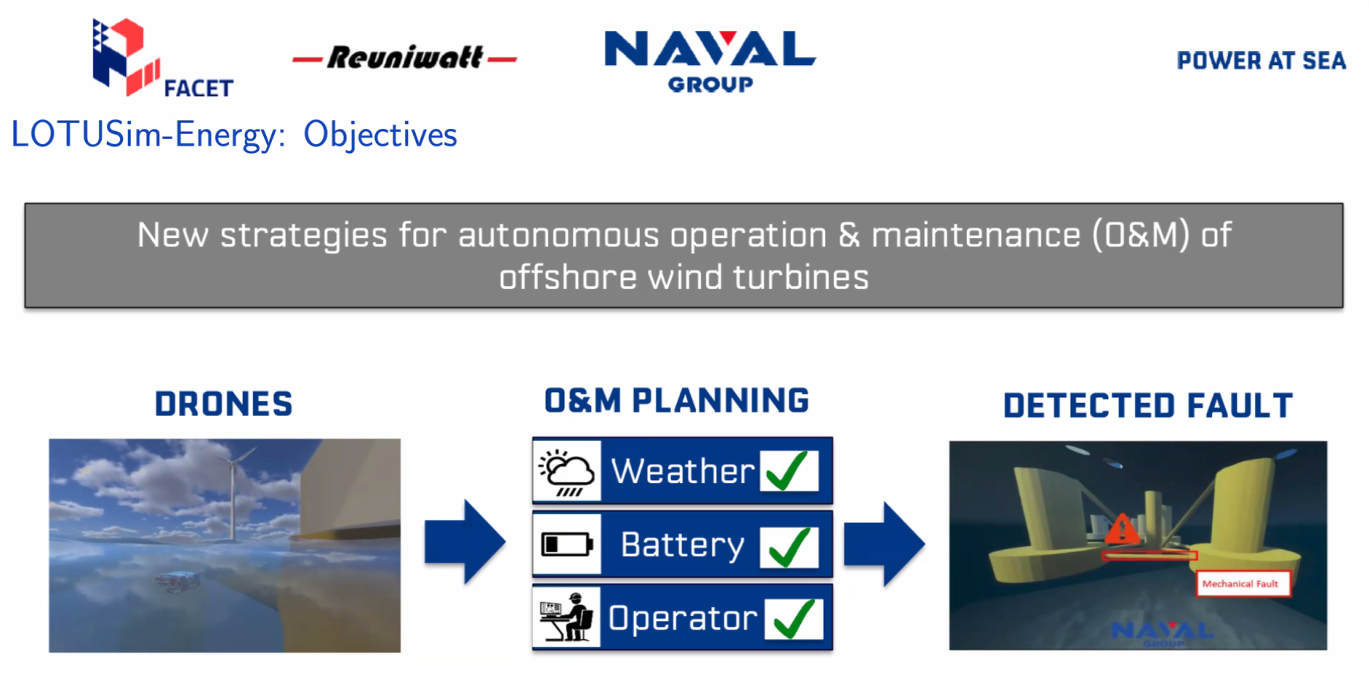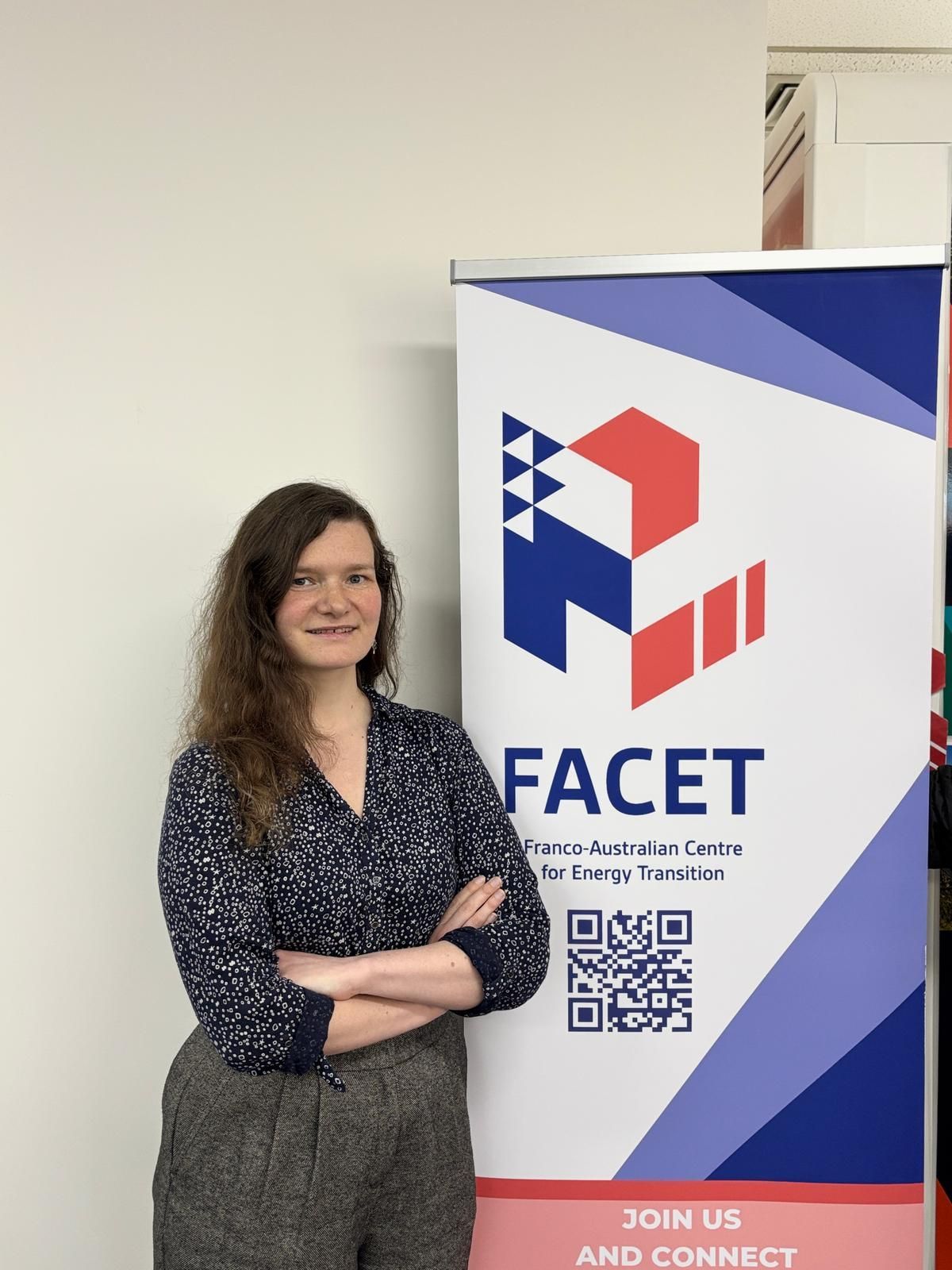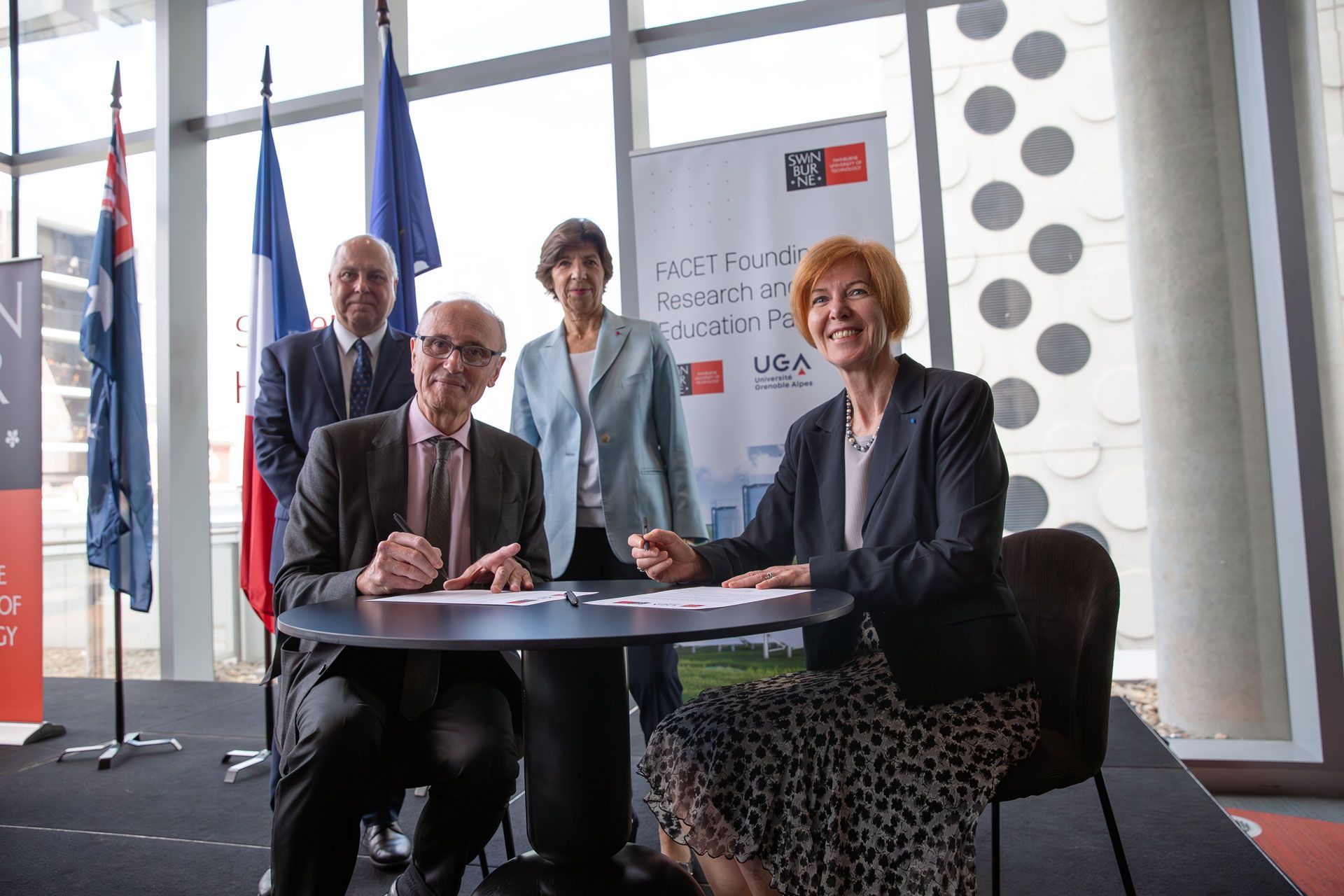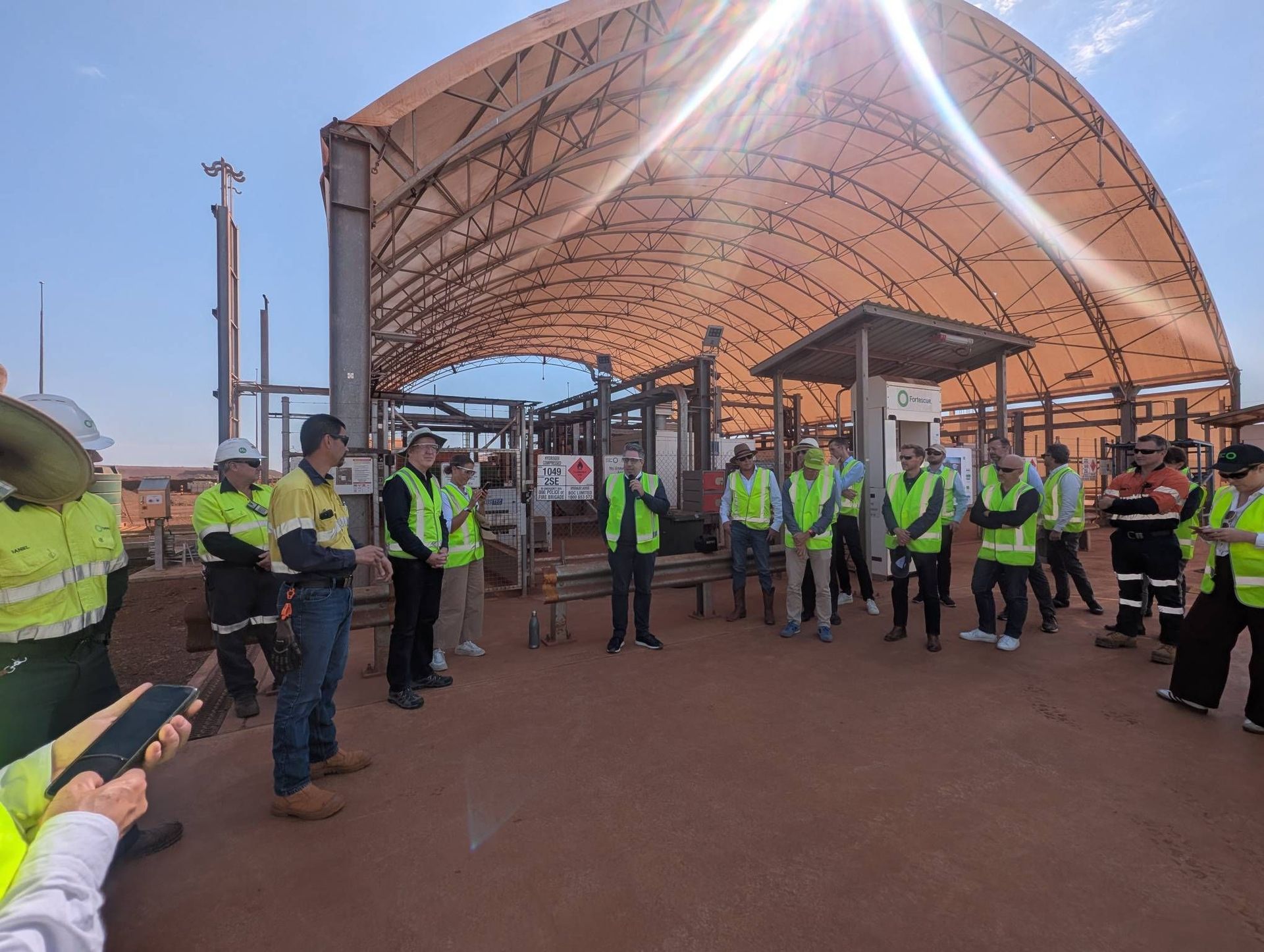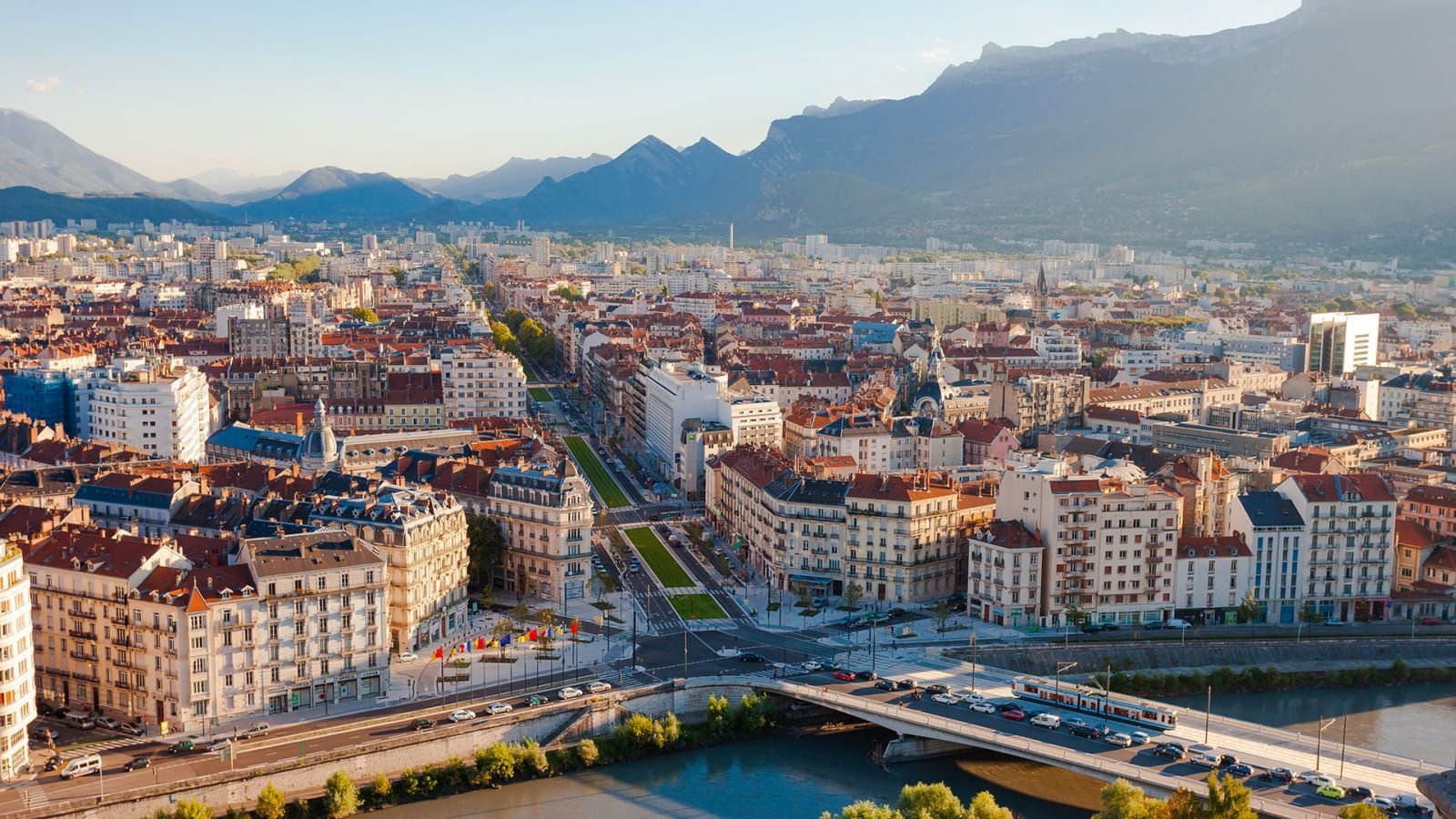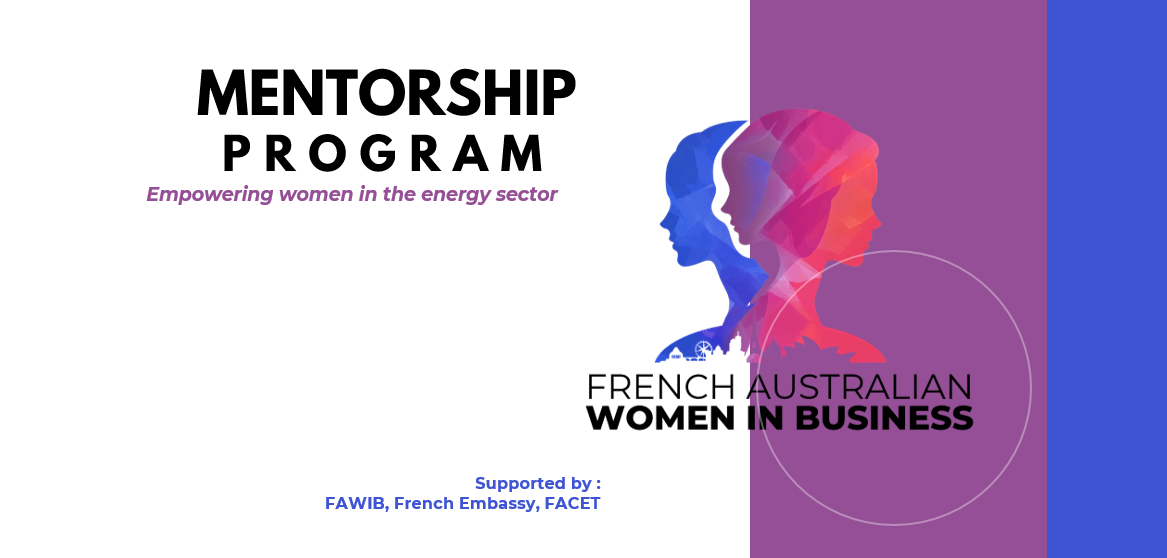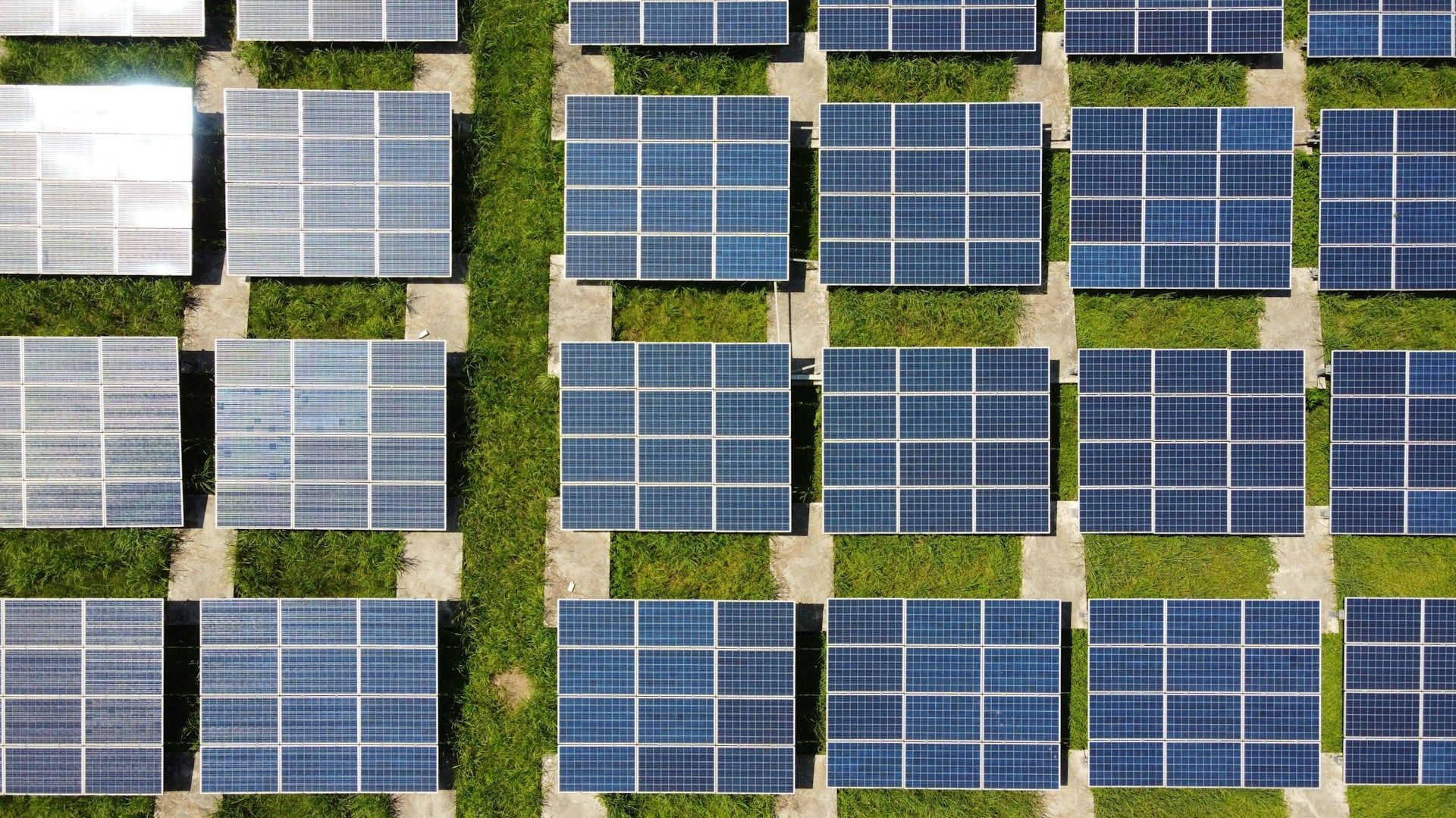FACET at the Australia–EU Hydrogen Supply Chain Forum in Perth
Perth, 3- 5 of September 2025 Strengthening EU–Australia Collaboration on Hydrogen
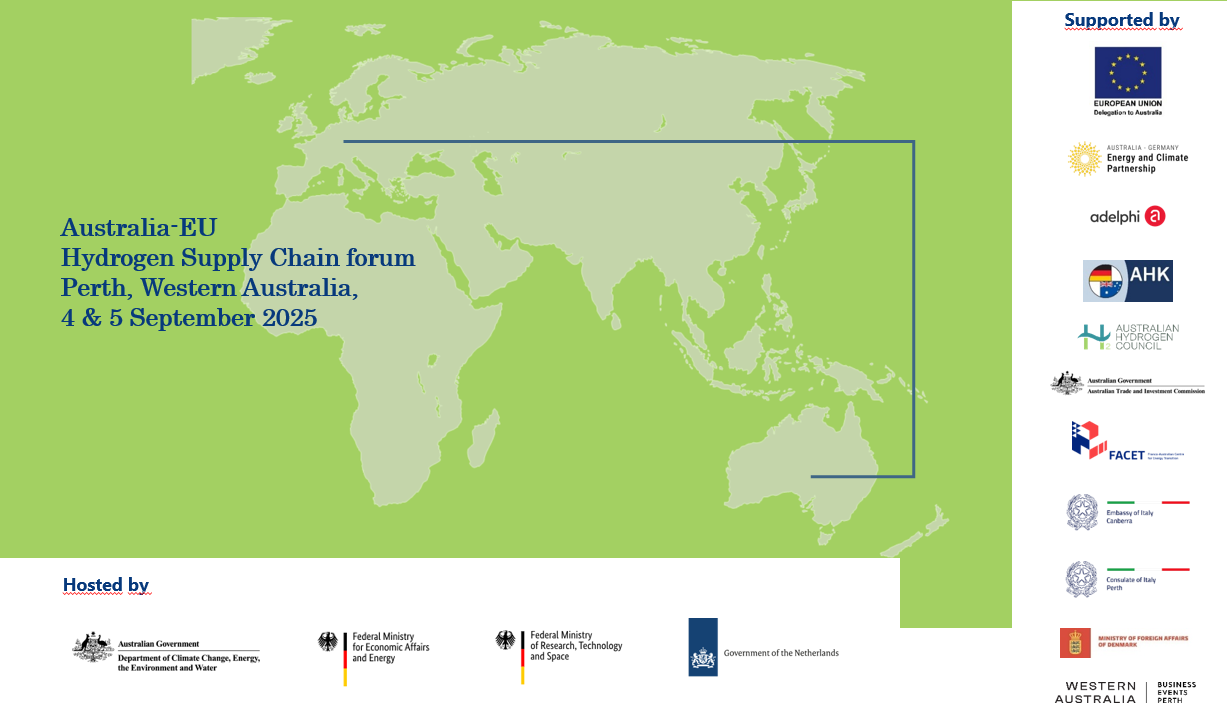
The Franco-Australian Indo Pacific Centre for Energy Transition (FACET) was honoured to take part in the Australia–EU Hydrogen Supply Chain Forum held in Perth.
We warmly thank the organisers The German Embassy, The Embassy of the Netherlands, Adelphi & the German Chamber of Commerce and the EU Delegation in Australia, the Government of Western Australia, and Fortescue for their invitation and for hosting a week of high-level discussions, technical visits, and strategic exchanges.
The event provided a valuable platform to showcase the growing strategic relationship between Europe and Australia in the hydrogen sector.

FACET’s at the Forum : discussions on the latest technological development
FACET was proud to be represented by International cooperation officer Mélanie Ducros, who moderated the panel on “Latest Technological Developments”, featuring leading innovators in carbon capture, ammonia, synthetic fuels, and hydrogen technologies. The panel highlighted the strategic relevance of EU–Australia collaboration, especially in sectors like green iron, where WA’s industrial base and Europe’s technological expertise can create powerful synergies.
Site Visit: Fortescue’s Christmas Creek Mine
FACET also joined the European delegation for a visit to Fortescue’s Christmas Creek mine, where teams presented their green hydrogen production pilots, the construction of a green iron plant, and heavy-duty mobility trials using battery-electric and liquefied hydrogen-powered trucks.
“It was a truly impressive visit— those were the largest tyres I’ve ever seen! But what stood out most was the boldness to innovate, the willingness to take risks, and the understanding that failure is part of the journey. That mindset is what drives real innovation.”
Mélanie Ducros - FACET International Cooperation Officer
Key Takeaways of the forum
1️⃣ EU–Australia hydrogen collaboration is deepening, built on long-standing ties and shared decarbonisation goals. Hydrogen and its derivatives are one of the core strategic focus for FACET’s activities.
2️⃣ Europe is seen as a global leader in industrial decarbonisation, and an essential partner in shaping international hydrogen strategies.
3️⃣ Successful hydrogen deployment requires tight coordination between industry, research, policymakers, and investors. FACET’s unique positioning enables it to facilitate these cross-sectoral and cross-border dialogues.
4️⃣ The pace of innovation is accelerating. Staying connected to cutting-edge research and pilot projects is essential.
---------------------------------------------
Learn more about : Western Australia, Strategic Hydrogen Powerhouse
Western Australia (WA) is not only a global mining leader—it is also emerging as a key player in the clean energy transition.
WA is responsible for nearly all of Australia’s iron ore production, and in 2024, it supplied 920 million tonnes, making it the largest iron ore producer in the world, ahead of Brazil
WA’s export infrastructure is world-class:
- Port Hedland alone handled 544 million tonnes of iron ore in 2024, representing 61% of the state’s total iron ore exports 1.
- Other major ports include Cape Lambert and Dampier, which together account for over 30% of export volumes.
Beyond minerals, WA has vast potential for renewable energy generation, particularly solar and wind, making it an ideal location for green hydrogen production and value-added processing such as green iron and e-fuels. The state’s Renewable Hydrogen Strategy and Strategic Industries Fund (A$1 billion) aim to position WA as a global hub for hydrogen innovation and export.
Key investments include:
- A $1 billion Strategic Industries Fund to support next-generation infrastructure,
- Hydrogen hubs in Kwinana, the Pilbara, and the Mid West,
- Fast-tracked approvals for clean energy projects,
- A commitment to 15,000 new jobs in emerging energy sectors.
WA’s strategy prioritises hydrogen use in hard-to-abate sectors, such as mining, steelmaking, and chemical production, where electrification is not always feasible. This positions hydrogen as a critical enabler of industrial decarbonisation.
---------------------------------------------
Learn more about : Hydrogen as a Decarbonisation Tool: Key Industrial Use Cases
Hydrogen is increasingly recognised as a strategic pathway for decarbonising energy-intensive industries:
- Green Iron : Hydrogen can replace coal as a reducing agent in iron ore processing, enabling near-zero emissions steel production. WA, as the world’s largest iron ore producer, is uniquely positioned to lead in this field.
- Ammonia : The ammonia industry is the largest consumer of hydrogen globally, accounting for over 50% of hydrogen use. Transitioning to green hydrogen in ammonia production could eliminate nearly all direct emissions from the Haber-Bosch process, with emerging applications in energy storage, maritime fuel, and fertiliser production.
- E-Fuels :Hydrogen-derived synthetic fuels (e-fuels) are gaining traction in aviation and shipping, where electrification is limited. These fuels are produced by combining hydrogen with captured CO₂, offering a pathway to decarbonise long-distance transport.
---------------------------------------------
Learn more about the Australian Government Support for Hydrogen Projects in Australia
During the forum, participants were introduced to the extensive suite of tools and funding mechanisms that the Australian government has put in place to accelerate the development of hydrogen and its derivatives. These programs are designed to support both domestic deployment and international export, particularly to strategic partners like Japan.
Key initiatives include:
- Hydrogen Headstart: A flagship program with a total investment of A$4 billion, including A$2 billion allocated in the 2024–25 federal budget for its second round. It provides production credits to close the commercial gap between the cost of renewable hydrogen and its market price, with a strong focus on large-scale export-oriented projects.
- A$2/kg Production Tax Incentive: Launching in 2027–28, this measure will inject A$6.7 billion over ten years to support renewable hydrogen production. It aims to make Australian hydrogen more competitive globally and attract international buyers.
- Future Made in Australia Act: Announced in April 2025, this act allocates A$22.7 billion to support domestic manufacturing and clean energy projects, including hydrogen and green fuels.
- Investor Front Door: A dedicated entry point for international investors seeking to engage with Australia’s clean energy transition, offering streamlined access to government support and project pipelines.
